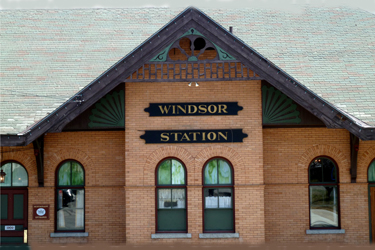 Rules of the Vermont Division for Historic Preservation: The Vermont Division for Historic Preservation (VDHP) is authorized by 22 V.S.A. § 723(10) to adopt rules and carry out the purposes of the Vermont Historic Preservation Act.
Rules of the Vermont Division for Historic Preservation: The Vermont Division for Historic Preservation (VDHP) is authorized by 22 V.S.A. § 723(10) to adopt rules and carry out the purposes of the Vermont Historic Preservation Act.
Regulations: VDHP is charged to fulfill our responsibilities under the Vermont State Historic Preservation Act and the National Historic Preservation Act to identify, preserve, and interpret historic resources on behalf of the citizens of the state and promoting them as significant components of our communities. This is achieved, in part, by the regulatory review and comment process for projects involving federal or state funding, licenses or permits.
When do I need a Historic Preservation Project Review in Vermont? click here
VDHP reviews and comments on projects under four regulations:
- 22 V.S.A. Chapter 14 -The Vermont Historic Preservation Act - For projects with state involvement in the form of funding, licenses or permits.
- Section 248 - The Vermont Public Utility Commission - For projects requiring a Certificate of Public Good.
- 10 V.S.A. Chapter 151 - Act 250/Criterion 8 - For projects requiring a new Act 250 permit or an amendment to an existing permit.
- Section 106 of the National Historic Preservation Act of 1966 - For projects with federal involvement in the form of funding, licenses or permits.
Permits for Archaeological Investigations on State Lands, State Archaeological Landmarks, or Under State Waters
The Vermont Historic Preservation Act (22 VSA 14, sections 764 and 782) directs the SHPO, with the advice of the State Archaeologist, to issue permits for exploration and field investigations to be undertaken on state lands, within the boundaries of a designated state archaeological landmark, or under state waters. State lands include all lands owned by any state agency, including but not limited to VDHP, Agency of Natural Resources, Agency of Agriculture, and Agency of Transportation. All permit requests should be made to VDHP.
Consultants retained by a State agency or who are conducting ongoing work on state lands may request an annual permit here. Consultants doing single projects on state land or under state waters can apply for a one-time permit here.
National Historic Preservation Act
The National Historic Preservation Act of 1966 (Public Law 89-665 U.S.C. 300101) is the legislation preserving America’s historic and archaeological sites. The Act created the National Register of Historic Places, the National Historic Landmarks Program, and the State and Tribal Historic Preservation Offices.
National Environmental Policy Act
The National Environmental Policy Act (NEPA) was one of the first laws ever written that establishes a broad national framework for protecting our environmental resources. NEPA's basic policy is to assure that all branches of government give proper consideration to these resources prior to undertaking any major federal action that significantly affects the environment.
NEPA requirements are invoked when airports, buildings, military complexes, highways, parkland purchases, and other federal activities are proposed. Environmental Assessments (EAs) and Environmental Impact Statements (EISs), which are assessments of the likelihood of impacts from alternative courses of action, are required from all federal agencies and are the most visible NEPA requirements.
Native American Graves Protection and Repatriation Act
The Native American Graves Protection and Repatriation Act is a federal law passed in 1990. NAGPRA provides a process for museums and federal agencies to return certain Native American cultural items – human remains, funerary objects, sacred objects, or objects of cultural patrimony – to lineal descendants, and culturally affiliated Indian tribes and Native Hawaiian organizations. NAGPRA includes provisions for unclaimed and culturally unidentifiable Native American cultural items, intentional and inadvertent discovery of Native American cultural items on federal and tribal lands, and penalties for noncompliance and illegal trafficking.
National Park Service Guide to Federal Historic Preservation Laws
The 2006 edition of Federal Historic Preservation Laws includes 24 Federal laws and portions of laws that pertain to the preservation of the nation's cultural heritage. Arranged chronologically, the laws trace the evolution of historic preservation and cultural resource management philosophy from the Antiquities Act of 1906 through the Sunken Military Craft Act of 2004.
The laws laid the foundation for the National Park Service as the lead federal preservation agency and for the national historic preservation partnership that includes National Park Service, other federal agencies, Tribal Preservation Offices, State Historic Preservation Offices, Certified Local Governments, and private organizations.
Vermont Museums Property Law
The Vermont Museums Property Law addresses ownership of any property held by a museum.
Preserving Unmarked Burials
Native American and Euro-American burial grounds are sacred places that are particularly vulnerable to accidental disturbance. Vermont state law prohibits disturbance of burial sites of any kind, even on private land. Burial sites can be marked with memorial stones or unmarked, with no aboveground indicators.
Jess Robinson, State Archaeologist
802-272-2509
Scott Dillon, Survey Archaeologist
802-272-7358
